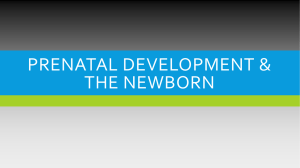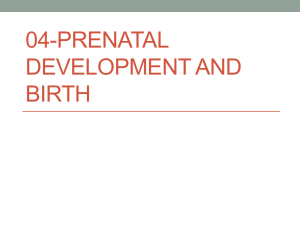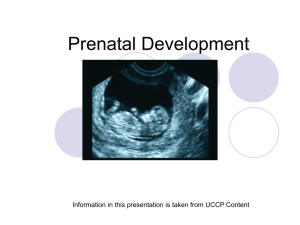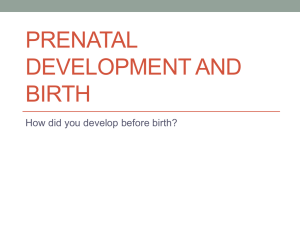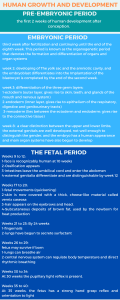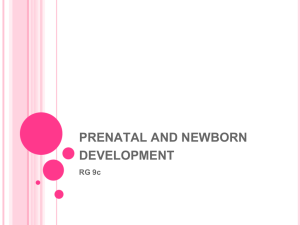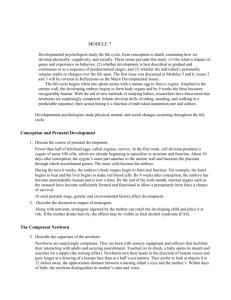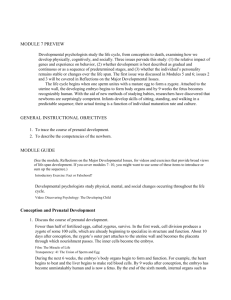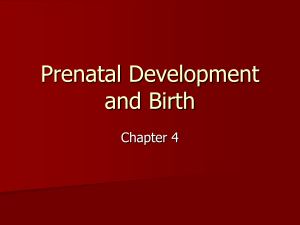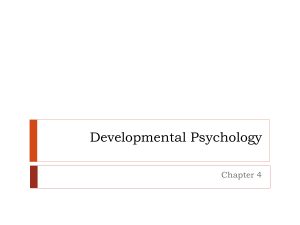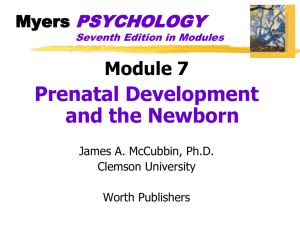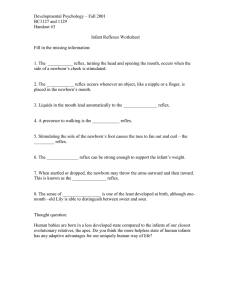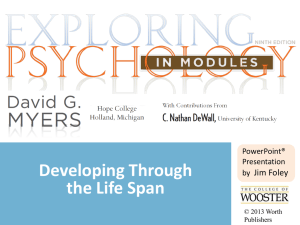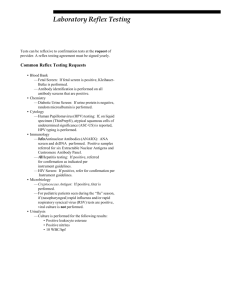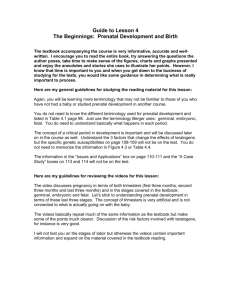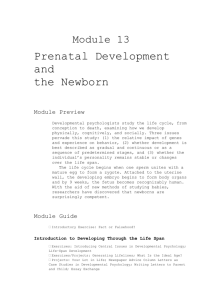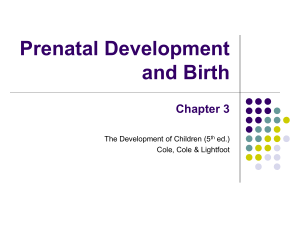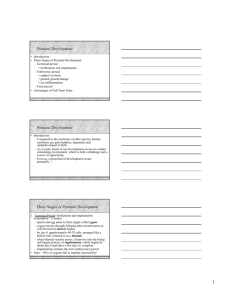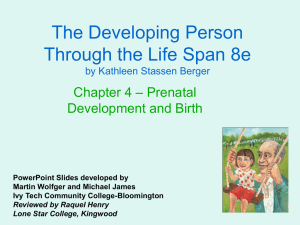Prenatal Development and the Newborn
advertisement
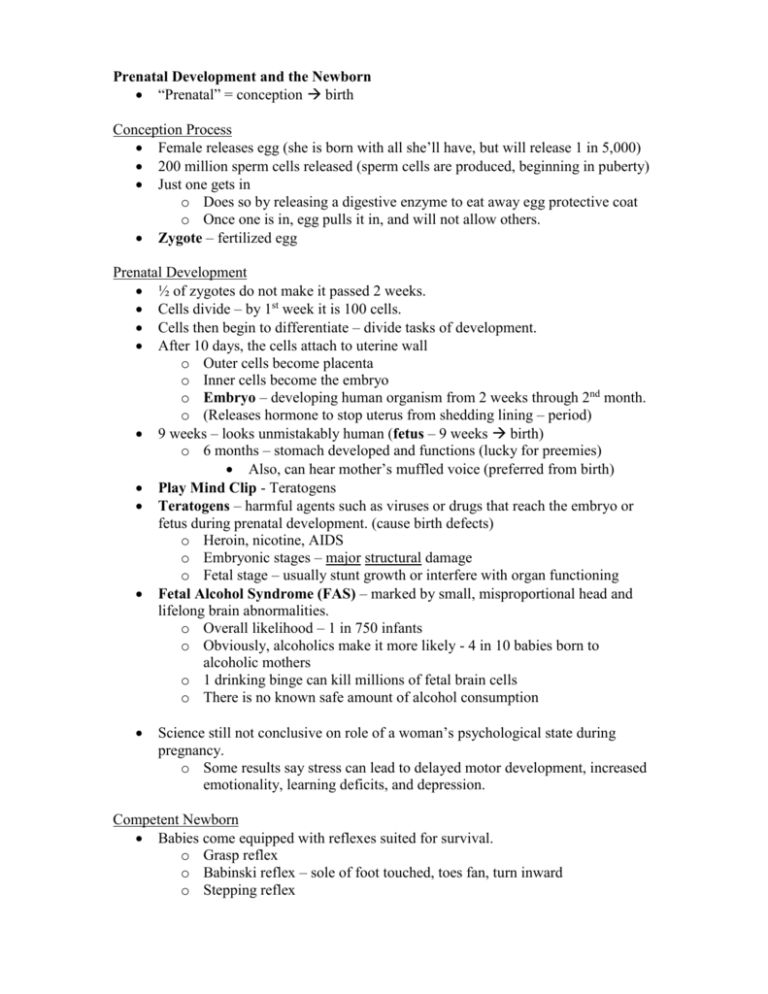
Prenatal Development and the Newborn “Prenatal” = conception birth Conception Process Female releases egg (she is born with all she’ll have, but will release 1 in 5,000) 200 million sperm cells released (sperm cells are produced, beginning in puberty) Just one gets in o Does so by releasing a digestive enzyme to eat away egg protective coat o Once one is in, egg pulls it in, and will not allow others. Zygote – fertilized egg Prenatal Development ½ of zygotes do not make it passed 2 weeks. Cells divide – by 1st week it is 100 cells. Cells then begin to differentiate – divide tasks of development. After 10 days, the cells attach to uterine wall o Outer cells become placenta o Inner cells become the embryo o Embryo – developing human organism from 2 weeks through 2nd month. o (Releases hormone to stop uterus from shedding lining – period) 9 weeks – looks unmistakably human (fetus – 9 weeks birth) o 6 months – stomach developed and functions (lucky for preemies) Also, can hear mother’s muffled voice (preferred from birth) Play Mind Clip - Teratogens Teratogens – harmful agents such as viruses or drugs that reach the embryo or fetus during prenatal development. (cause birth defects) o Heroin, nicotine, AIDS o Embryonic stages – major structural damage o Fetal stage – usually stunt growth or interfere with organ functioning Fetal Alcohol Syndrome (FAS) – marked by small, misproportional head and lifelong brain abnormalities. o Overall likelihood – 1 in 750 infants o Obviously, alcoholics make it more likely - 4 in 10 babies born to alcoholic mothers o 1 drinking binge can kill millions of fetal brain cells o There is no known safe amount of alcohol consumption Science still not conclusive on role of a woman’s psychological state during pregnancy. o Some results say stress can lead to delayed motor development, increased emotionality, learning deficits, and depression. Competent Newborn Babies come equipped with reflexes suited for survival. o Grasp reflex o Babinski reflex – sole of foot touched, toes fan, turn inward o Stepping reflex o Moro reflex – startle response – infant arches back, throws back head, flings out arms and legs – then rapidly closes arms and legs to body. o Rooting reflex – if head touched, baby turns, searches, and sucks o Visual tracking Crying – humans predisposed to find it unpleasant, relieving it is reward. How do we study newborns? How do we know what they like? o He have to become behaviorists – let the behaviors do the talking. o Habituation – decreasing responsiveness with repeated stimulation. As infants gain familiarity with repeated exposure to a visual stimulus, their interest wanes and they begin to look away sooner. What do they like? o Prefer sights/sounds that facilitate social responsiveness Turn head toward human voices Smell of mother Can find mother’s bra when given 2 choices Preferred distance from object 8” – 12” Eye contact distance while nursing Prefer facial pattern to non-facial pattern Prefer bull’s-eye (resembles eye) to blank disc.
